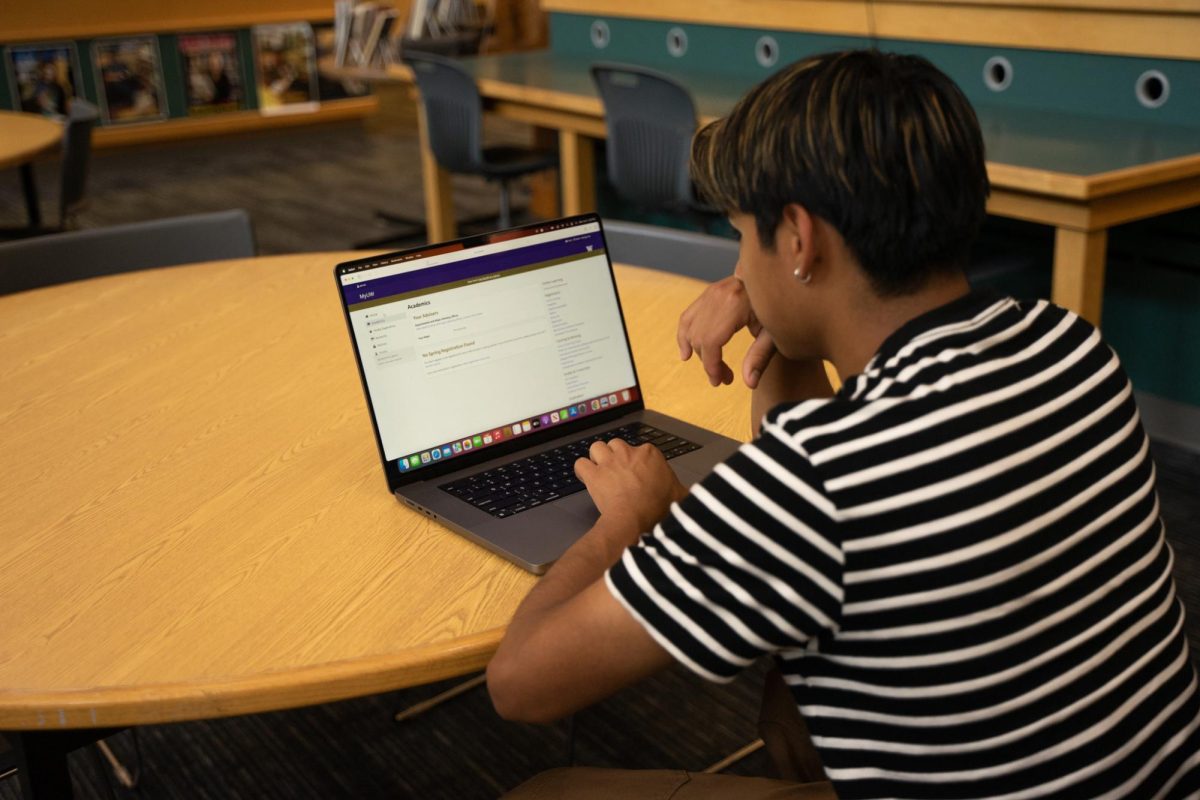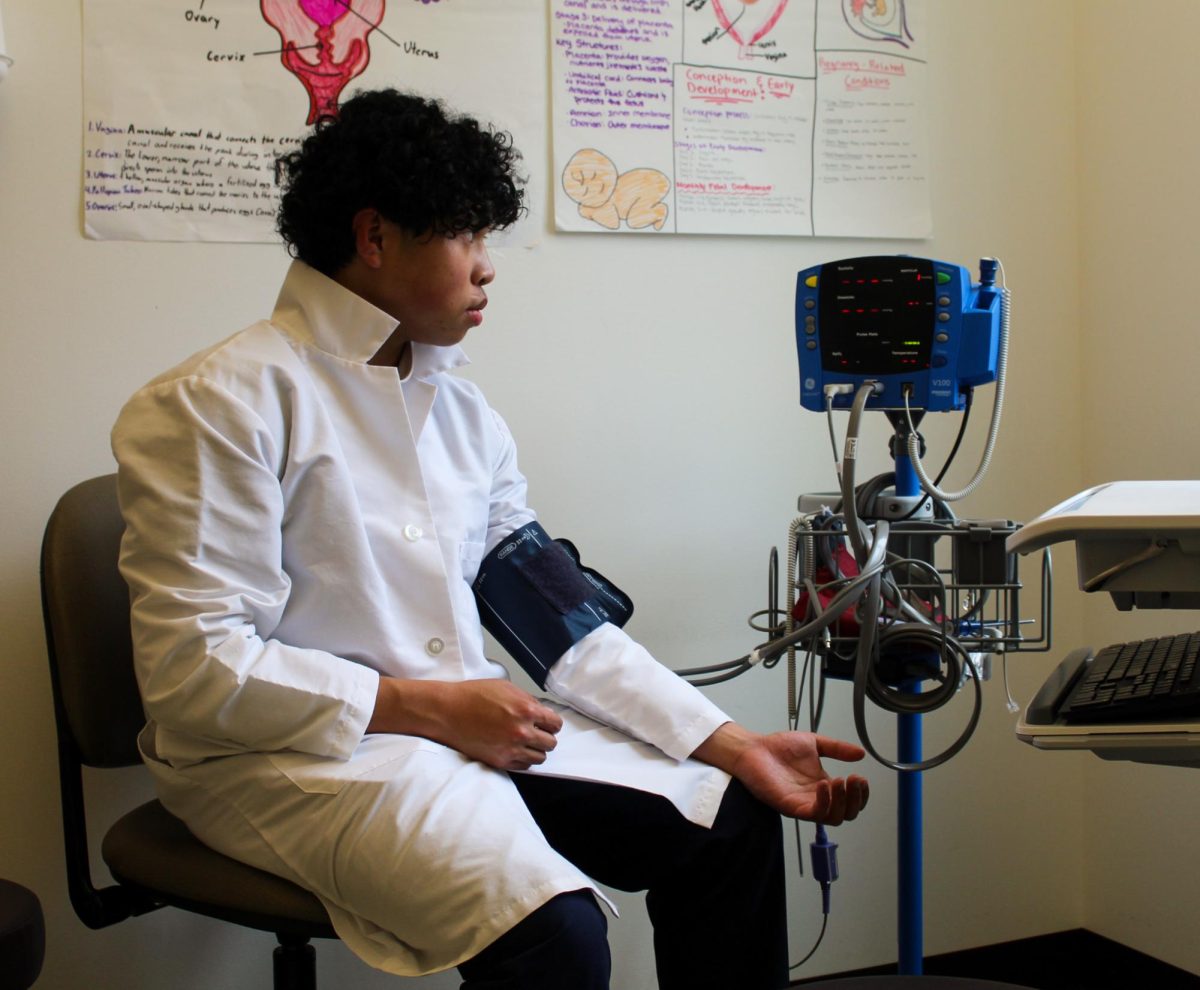Birth Control and Pregnancy
Many sexually active teens use birth control to prevent pregnancy. Junior Eva Cohen* (she/her) uses a NuvaRing, a small flexible ring that’s placed inside the vagina and releases hormones. Cohen’s gynecologist laid out the pros and cons of each method of birth control. She then got a prescription for the NuvaRing, which she picks up from the pharmacy every three months.
“I finally had the courage to ask my mom, who did not take it so well,” Cohen said. “But eventually I was able to get on it, and she scheduled an appointment for me.”
Cohen said that for many girls, it’s hard to ask their parents to help them get birth control because having sex as a teen is generally not accepted. When senior Sophia DiBlasi (she/her) asked her parents for birth control, they cried about her growing up. According to the 2021 Healthy Youth Survey, 32% of Inglemoor seniors and 12% of sophomores have had sex.
At first, Cohen considered not telling her parents that she was starting birth control. She tried to get it from Planned Parenthood, but the only available appointment was a month away and during the school day. She was on the phone with Planned Parenthood for 45 minutes trying to get a different form of insurance, since she couldn’t use her parents’.
Although Cohen didn’t end up using Planned Parenthood to get birth control, she wishes it were a more accessible resource for people that need it.
“Planned Parenthood is this great resource, but you can’t really use it unless you’re planning two months in advance,” senior Tracy Hazon* (she/her) said.
DiBlasi said it’s hard to go through Planned Parenthood, especially if you need to get birth control immediately without your parents knowing. She said that at her friend’s school in Seattle, there is a clinic on campus where students can get birth control. A similar health center will be added during Inglemoor’s remodel, said principal architect Kevin Oremus.
Birth control can affect people differently. Some hormonal birth control methods may ease cramps and premenstrual syndrome while others may cause nausea or increase the risk of depression, according to Harvard Health Publishing.
“As soon as I started taking birth control, my anxiety became a lot worse. I would be driving to work, and I would just randomly burst into tears,” Cohen said. “It definitely increased my overthinking, and being in a relationship, it was impacted by it.”
After getting birth control, DiBlasi experienced some physical side effects, including an increase in acne. Although she was concerned about birth control affecting her mental health because she is also on antidepressants, she said that it didn’t have much of an effect.
“I feel like people are actually more afraid of the side effects, so they don’t get birth control,” Hazon said.
After getting an intrauterine device, a small piece of flexible plastic that is inserted into the uterus to prevent pregnancy, Hazon had cramping and nausea. There are many different types of IUDs, which can be divided into two types: hormonal and copper. She had her hormonal IUD removed and then switched to a Nexplanon implant. Nexplanon is a tiny thin rod usually placed in the upper arm that releases hormones in your body to prevent pregnancy. It lasts for up to five years. Hanzon said the entire process of getting birth control took her about seven months.
Although health teacher Amy Hayward (she/her) tries to make birth control a comfortable topic in class, she believes that student comfort levels relate to their social familial environment.
The state sets health curriculum standards, and each school district can choose a specific curriculum that meets those standards. Health classes at Inglemoor follow the King County Flash curriculum. In class, students learn about different methods of contraception, and a speaker from Planned Parenthood presents most of the other information, Hayward said.
“We should talk about [birth control] every year, not just in health class, because I don’t remember health,” senior Gabi Toney (she/her) said. “Every year you should have refreshers, or as you get older, you can go more in-depth.”
Although there are 12 different types of birth control for women, the only medically approved male contraceptives are condoms and vasectomies. Vasectomies are more than 99% effective at preventing pregnancy and don’t alter testosterone production. However, researchers are currently investigating various hormonal and non-hormonal contraceptives for men. There are currently two clinical trials at the University of Washington School of Medicine on male birth control pills that change the level of male hormones with few side effects.
“Honestly, something I wish was promoted more was male birth control, because, just from a few things that I’ve heard, is that it has fewer side effects and is way more guaranteed to be effective,” Cohen said.
DiBlasi said that most men she knows would argue that birth control is a women’s job. Toney said she didn’t even know what male birth control was.
Hazon said recent abortion restrictions have had spiraling effects on all of women’s reproductive rights. She said it makes all of women’s reproductive care and rights more of a taboo subject.
“We don’t extensively teach about it, we just list resources,” Hayward said. “So there are crisis lines, you can talk to a nurse, you can talk to a counselor and discuss different resources for options.”
Cohen said although she personally wouldn’t get an abortion, it is an important option for women to have.
“There are a lot of reasons for not wanting to have a child. I think a lot of people have very different lives, and it’s important to have the option,” Cohen said.
Hayward said that teen pregnancy rates at Inglemoor are very low. She said the amount of support that a pregnant student has can affect whether or not the student ends up staying in school.
“It’s very rare that we actually see students that had babies,” Hayward said. “At the first school I taught at, we actually had a nursery where there were enough teen parents that they brought their kids to the nursery at the school, right next to the cafeteria. It was in Port Townsend years ago in the ‘90s.”
Hayward said that if students are pregnant, they can be referred to counselors or to the Lake Washington Family Program, which helps students with children continue to take classes. Hayward said she knew a student who was pregnant and transferred to Lake Washington for the Family Program, before coming back to Inglemoor to graduate.
Senior Gracie Toney (she/her) said she doesn’t think that someone can be pregnant at school without feeling incredibly judged. When a woman isn’t ready for a child, she is left with two options: adoption or abortion. Abortion is becoming exceedingly challenging to get in America, especially in some states such as Washington’s neighboring state, Idaho.
“We absolutely must come together like never before to support women and teens facing unexpected or unwanted pregnancies. Families, churches, charities and local and state governments must stand ready to lift them up and help them and their families with access to adoption services, healthcare, financial and food assistance, counseling and treatment and family planning,” said Governor of Idaho Brad Little in a pres release. “We are being called to support women and our fellow community members in extraordinary new ways, and I’m confident Idahoans are ready to meet this responsibility with love and compassion.”
However, concerns remain for women across America.
Abortion Rights in America
Roe v. Wade is the Supreme Court case that legalized abortion in the United States in 1973. Safe, legal abortion remained a federal constitutional right nationwide for nearly 50 years. However, on June 24, 2022, the Supreme Court overturned Roe in Dobbs v. Jackson Women’s Health Organization — a case that challenged a Mississippi ban on abortion at 15 weeks of pregnancy. As a result, 1 in 3 women now live in states where abortion is extremely limited, according to Planned Parenthood.
In Washington, the number of abortion patients from out of state has increased by 36% this year, according to data from Sen. Maria Cantwell’s office. Gov. Jay Inslee declared Washington a safe haven for abortion rights, prohibiting police from investigating out-of-state inquiries on abortion matters. Washington also proposed five new bills this year to safeguard abortion access. These bills include ones that increase the availability of abortion medications; protect providers and patients in Washington from legal consequences; enhance privacy around health data; and eliminate abortion cost sharing for health plans issued or renewed after January 2024.
“People will have abortions, no matter what the law says,” Kimra Luna (they/them) said, a certified abortion doula and founder of Idaho Abortion Rights. “In fact, the laws are now proving that people are actually having more abortions because of the bans. Even statistically, if you look at the state of Oregon and the state of Washington, the number of Idahoans that have been going there has significantly increased.”
Organizations like Idaho Abortion Rights help women overcome the obstacles they may face when getting an abortion. They provide financial assistance for abortion procedures, childcare services during the appointments, and travel expenses and fees. However, Luna said they have a difficult time receiving grants. Idaho Abortion Rights has been completely community-funded up until recently when they received a fiscal sponsor. Luna urges there to be more reproductive justice grants because her goal is to help as many women as possible have safe and affordable healthcare options.
“If abortion becomes banned in more places, I think people will start naturally moving to places that they want to live, and that would be a big factor. I wouldn’t move to a state where I couldn’t get an abortion,” Gracie Toney said.
Although abortions in Washington are legal until fetal viability — when the human fetus is able to survive outside of the uterus, generally 24-26 weeks into pregnancy — in Idaho abortions are banned past six weeks.
“But we all know that’s essentially a total ban because most people do not know they are pregnant until after that point,” Luna said. “One of the most restrictive parts of the legislation is that people who are minors are unable to receive help from other adults who may help them travel out of state to get abortion care.
In April 2023, Idaho became the first state to make it illegal for minors to leave the state to get an abortion without parental consent. Anyone who helps a minor access an out-of-state abortion would receive a minimum imprisonment of two to five years.
“The legislation is not taking into consideration the amount of harm that this is creating in our communities and the amount of fear that’s creating,” Luna said. “Women are really being treated as second-class citizens due to these bans, and I don’t think that they thought about all the types of repercussions.”
Across the nation, women are resorting to legal action after being denied abortion at the potential cost of their lives. Fourteen states have banned abortion in almost all circumstances and seven others have a gestational limit — the length of the pregnancy. For example, some states ban abortion at 22 weeks claiming that a fetus can feel pain at that point.
Adolescents and low-income women are disproportionately affected by the bans because they are most likely to delay seeking care. The most common reason for delay is a lack of travel and procedure funds. A research paper from the National Library of Medicine estimated that each year, more than 4,000 American women are denied an abortion because of facility gestational limits and are forced to carry unwanted pregnancies to term.
“There’s also a much higher rate of suicide attempts in pregnant women when it comes to the bans because when people feel there’s not a way out, they may begin to self harm. There is a lot of what we call reproductive coercion. That is when a person becomes pregnant, and then their partner threatens to report them to the authorities if they go out of state to have an abortion, or they have people threatening to sue them if they have an abortion. So there’s a lot of different ways that it’s causing harm, and a lot of it is mental harm.” Luna said. “We don’t see a lot of articles and things being published about the mental harm that is happening, not just the physical harm that is happening towards women and all people who are capable of becoming pregnant.”
Although abortions are banned in some states, there are still ways to obtain one. The “abortion pill” is the common name for a combination of two medications — mifepristone and misoprostol — used to end a pregnancy up to 24 weeks.
“You can get abortion medications through online pharmacies. There’s online websites like PlanCpills.org that gives people all of their options in order to get medications sent directly to their homes to be able to have a safe abortion at home,” Luna said.
According to Luna, being able to access these medications at home has been especially empowering for low income women who had difficulty traveling to a clinic. States where abortion is currently banned — like Idaho — didn’t have many abortion clinics even before the bans, but the bans have caused many women to travel at least 100 miles to get the procedure.
In 2000, the Food and Drug Administration legalized mifepristone for abortion. However, In April 2023, two conflicting rulings on revoking this approval surfaced. According to The American College of Obstetricians and Gynecologists, most medical professionals prescribing the two drugs have decided that if mifepristone were to be removed from the market, they would only prescribe misoprostol. The single-drug approach has a lower rate of effectiveness in ending pregnancies, but it is widely used in countries where mifepristone is illegal or unavailable.
“We always are very clear with people that there are legal risks and potential legal ramifications of consuming abortion medications,” said Luna. “If a person does go to a hospital, they can tell a doctor that they had a miscarriage… it’d be very difficult to prove in court that someone took abortion medications. It would have to be probably more of a word of mouth, ‘he said, she said’ type of thing, or seeing a person’s text messages, and that’s why we teach all of our clients how to be digitally secure to ensure that there’s less likelihood of a person becoming criminalized.”
Abortion is one of the most polarizing debates among political parties in the United States. Idaho Student Activist Yvonne Shen (she/her) believes the U.S. is in an unpredictable era of politics, but the polarization will only hinder politicians’ ability to reach an agreeable solution.
“Being able to access abortion can be the make-or-break to someone’s life path,” Shen said. “Many of the people getting abortions are low-income. If they were to raise a child and take care of themselves, that would be incredibly difficult and would potentially result in a lower quality of life for both parents and child, which isn’t fair. Being able to access an abortion can save lives and prevent certain instances of child abuse or neglect.”


















